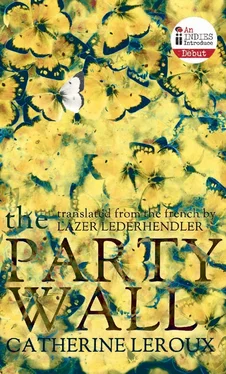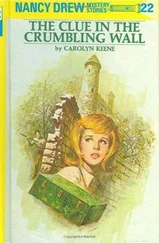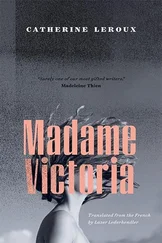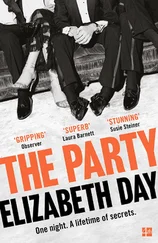THE SISTERS IN THE WALLS (MONETTE AND ANGIE)
Amid the tumultof sirens and tourniquets, Angie sees nothing. Not the movement of the stretcher, not the comings and goings of the paramedics, not the great absence below her knees. She does not hear Monette sobbing in the arms of a policeman, or the neighbour saying how to get in touch with their mother, or the birds that don’t care and keep on keening because it’s hot, because the tree barks are alive with larvae. The only things Angie manages to recognize are the silhouettes of two little girls. The only thing she hears is Mam’s voice telling them that story before putting them to bed. The story of the little girls in the walls.
In a crooked old house, two inseparable sisters had parents who were mean and stupid and would beat them morning and night and shut them in a closet, sometimes for days. The little girls stayed there and made no attempt to escape because even though they did not like to be locked up in the dark, they had far more to fear on the outside.
One day they discovered a secret passageway from the closet to the space between the walls, which allowed them to move throughout the house. Since the place was in a bad state of repair, they could look through the cracks into the rooms. Keeping quiet, they knew what their parents were up to at any given moment and could be back in the closet when it was time to be let out.
Protected in this way and enjoying the advantages of spying, the two sisters began to be less afraid of their father and mother. Pretty soon they came to see them as mere scarecrows whose bellies were stuffed with straw. Speaking in whispers, the girls learned to make fun of their parents, to laugh at their cruelty and foolishness.
Then they hit on the idea of never leaving the walls. What was the point, they said to each other, of obediently going back into the closet only to be beaten anew? The elder sister stole nails, while the younger, a hammer. Then, after patiently waiting for their parents to go shopping, they slipped through the passageway and sealed it for good. When their father came home he could not find them anywhere. Their mother went to the window and started shouting their names. Inside the opposite wall, the two children laughed to themselves.
The parents looked for them everywhere and wept at having lost them, but the sisters never wavered. At night before going to sleep, one of the girls would slip her arm through a hole in the pantry and take cookies, potatoes, raw eggs. They slept back to back and spent their days making up silent songs or pantomimes in which fairies danced with show dogs, and they learned to write by etching letters into the panelling.
After a few months, their parents gave up all hope of finding them again, and they were declared dead. From time to time they would amuse themselves by scratching or whistling between the planks to frighten their erstwhile tormentors, who would go out to the garden in the middle of the night, believing the house was haunted. When, out of exhaustion, the parents decided to move to a faraway city, the two little girls chose not to leave the labyrinth. They stayed between the walls, their bodies growing flatter and wider, their thoughts and joys flattened out, their days unfolding horizontally. Still today, when visitors come to explore the abandoned house, they knock on the partitions, and those with keen ears can hear smothered laughter, an eggshell cracking, the rustle of a skirt, and a hand turning a page as large as a wall.
The situationof Ariel and Marie is based on the one of a British couple whose marriage was annulled in 2011 after the truth about their origins came to light. Their respective parents had never told them they were adopted. Hence, on the day they pronounced their wedding vows they were unaware of having a twin sibling. Their identity has never been revealed, and my characters, as well as their occupations, family circumstances, temperaments, and decisions are entirely the fruits of my imagination.
The Angie character was inspired by Anaiah Rucker, who, at the age of nine, saved her younger sister’s life by pushing her out of the way of a truck. She lost a leg in the accident. That she hails from Georgia is, as far as I know, the only feature she shares with little Angie and her sister.
Madeleine’s story draws on the life of Karen Keegan, one of the very rare natural “chimeras” identified by science. But while the sequence of events in the fictional narrative — kidney disease, compatibility tests, absence of genetic filiation, and then the discovery of two distinct DNAs in the same woman — coincides with that of the lived experience, Madeleine Sicotte and those close to her are in no way similar to Ms. Keegan and her family and intimates.
As for Joanna, she is modelled on someone I met during a trip to Asia several years ago. I have changed very little except for the traveller’s name, and her presence in my story should be seen as a humble tribute to that larger-than-life woman.
Aside from this one outright debt to reality, I have taken nothing from the other stories but their framework, to which I have added several layers of fiction, so that my characters should not be regarded as copies of actual persons. If any of them should by chance — something I have learned to be wary of — read this novel, I respectfully thank them for lending an impetus to my work through the extraordinary paths they have followed and their no doubt equally remarkable courage.


CATHERINE LEROUXwas born in suburban Montreal in 1979. She studied philosophy at Université de Montréal, and worked at a wide variety of jobs in Quebec, Ontario, the United States, and Europe. She later became a journalist and was the Toronto correspondent for Radio-Canada. Her first novel, La marche en forêt, was nominated for the 2012 Quebec Booksellers’ Prize. The Party Wall, her second novel, was a finalist for the 2013 Grand Prix du Livre de Montréal and won the prestigious Prix France-Québec in 2014. Both novels were published in France. Her most recent book, the story sequence Madame Victoria, appeared in 2015.
Catherine Leroux lives in Montreal, where she is a full-time writer and translator.
Lazer Lederhendleris a full-time translator specializing in contemporary Québécois fiction and nonfiction. His translations have earned him many distinctions, including the Governor General’s Literary Award and the Cole Prize for Translation of the Quebec Writers’ Federation. His work has helped acquaint English-language readers with a new cohort of talented, innovative writers, such as Nicolas Dickner, Alain Farah, Perrine Leblanc, and Catherine Leroux.













